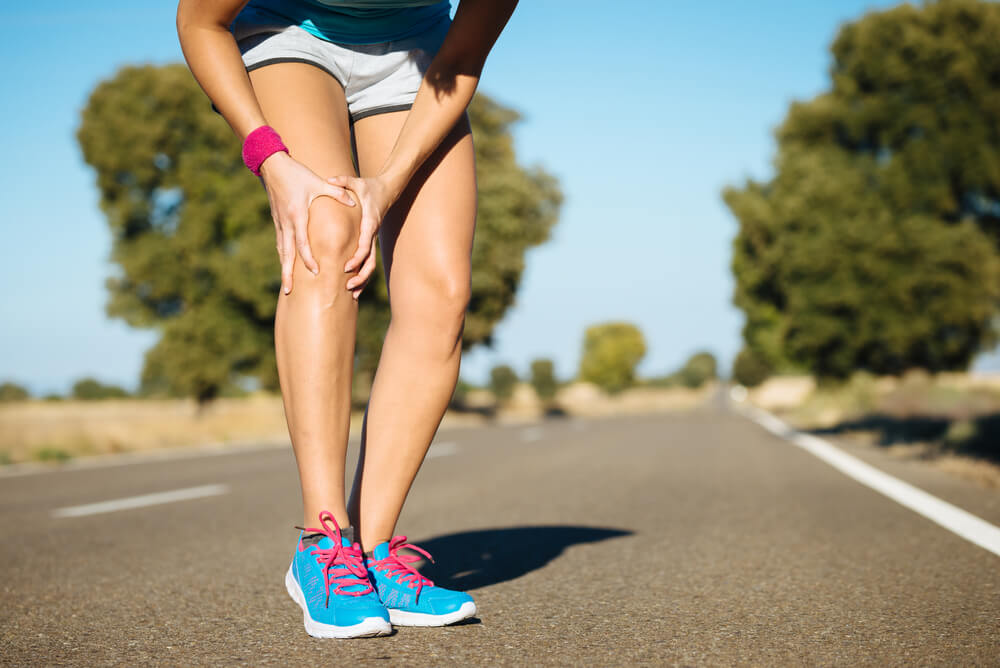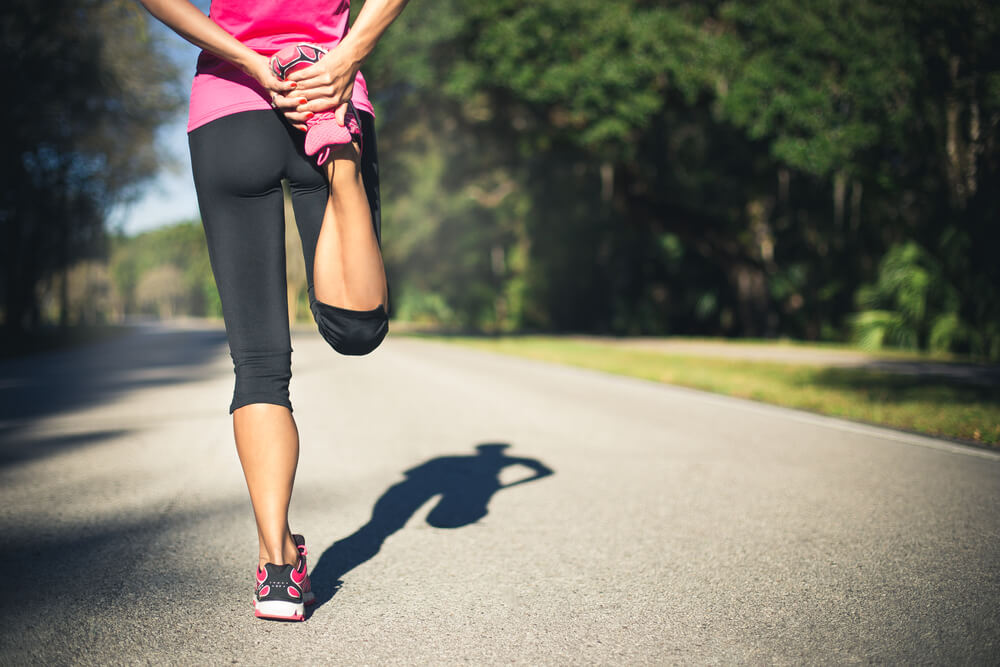
Unfortunately, knee damage is seen nearly every day in the sports world.
From youth recreational games to professional sports, knee injuries are far too common.
A lot of time, these injuries are caused by twisting, pushing or shearing of some sort. It’s never a pleasant scene to say the least. Before explaining what moves do the most damage and how to make your knees stronger, let’s take a look at the joint structure.
Bones – Tendons – Ligaments
The knee joint is a synovial joint structure that connects the femur to the tibia. Having a set of healthy knees is something that countless people struggle with each day. Just like the spine, shoulder, wrist or any other joint in the body, healthy knees will make the quality of your life so much more enjoyable. Your knees are used every day whether it be to walk, stand, squat or perform virtually any other movement with your legs.
Wear and tear is almost inevitable for someone who works a high labor job or exercises frequently. Therefore, knowing how to properly strengthen your knee joints is beneficial for almost anyone.
Fluids, cartilage and ligaments are the primary areas of concern with your knees. Too much fluid can cause inflammation, while not enough fluids can cause greater impact and pain. On the same note, the breakdown or lack of cartilage of the knee is what causes a lot of people to really suffer with knee pain.
Each knee has cartilage that is made up in two C-shaped menisci. Lying on the medial and lateral edges on the top portion of the tibia, these shock absorbers help distribute weight and stress evenly. Stresses of pounding, rubbing or grinding of the knee is caused by the lack of this menisci. Following the course of many years of wear and tear on your knee joints, the cartilage gets broken down and fails to rebound into healthy form. And, that’s only the beginning because, unfortunately, this cartilage can’t grow back or repair itself.
What Ligaments Are In Your Knees?
There are four ligaments. These knee stabilizers are known as the ACL, LCL, MCL and PCL. Together, these four ligaments connect the thigh bone (femur) to the lower leg bones (tibia and fibula).
ACL – Anterior Cruciate Ligament
Connects the femur to the tibia and prevents the forward movement of the tibia.
LCL – Lateral Collateral Ligament
Connects the femur to the fibula on the outer side of the leg. It helps stabilize the knee from inside forces placed upon it.
MCL – Medial Collateral Ligament
Connects the femur to the tibia on the inside of the leg. It helps stabilize the knee from outside forces placed upon it.
PCL – Posterior Cruciate Ligament
Connects the femur to the tibia. It prevents the tibia from being bent back the wrong way.
A torn ACL, or what is sometimes referred to as a blown out knee, is a very serious injury. Indeed, those are the dreaded words no athlete ever wants to hear coming from a medical professional. When a torn ACL occurs, essentially what that means is that the ACL, MCL and cartilage meniscus all underwent a full rupture.
Muscles In Your Knee
With any joint in the body, there has to be surrounding muscles to keep the joint strong and stable. The two main muscle groups that make up the knee are the quadriceps and hamstrings. The stronger your quadriceps and hamstring muscles are, the less stress will be placed directly on your joint’s ligaments and cartilage. The quadriceps act as the knee extensors. The hamstring muscle group serves as your knee flexors. Typically, most individuals will have weak and/or tight hamstrings, along with tight quadriceps. If you are like most people, you will find that your quadriceps are weaker than your hamstrings.
This is the case particularly with a lot of younger athletes. And, that means that injuries are bound to happen. For example, NaVorro Bowman, linebacker for the NFL’s San Francisco 49ers, has already sustained a torn ACL and MCL left knee injury.
The NBA’s Golden State Warriors guard, Shaun Livingston, suffered an ACL, PCL, meniscus tear. He also had a MCL sprain; dislocated patella; dislocated tibiofibular joint. Perhaps not surprisingly, these types of injuries have also spread over into the world of competitive bodybuilding with J.P. Fux’s patella tendon and medial quadriceps tear injury being an obvious example.
Exercise Selection
Because these injuries can be so severe, it’s important to do every exercise possible to prevent them. When it comes to exercise selection for strong knees, many individuals will perform the correct exercises. However, performing the exercises the correct way is the key to your success.
Why?
Simple, there are a few exercises that can do more harm than good.

Leg Extensions
Let’s look at the extensions exercise to avoid in the gym as this particular exercise is used by many athletes and rehab patients to rebuild quad strength, especially after a traumatic injury. But, it should be noted that this exercise is not necessarily the ideal one to perform. A lot of bodybuilders do leg extensions to get a pump, but other than that, there really aren’t any other benefits.
During the giant cycle (walking or running) you never experience the type of stress a leg extension will put on your quadriceps or knee joint. This exercise causes constant ACL tension when being performed. To top it off, this is a machine isolation exercise that puts unneeded stress on one of the most important joints in your body. Instead of performing leg extension exercises, you should be performing squats, lunges and step-ups.
These exercises will benefit you greatly because they will keep your knees healthy.
Overall, it is very simple to strengthen your knees. Just by performing squats, lunges, deadlifts, step ups, running, walking and numerous other exercises, you will strengthen your knees.
How Else Do I Strengthen My Knees?
Squats
We were born to squat. All individuals squat, every single day.
Nevertheless, squats are important and they work!
Want proof?
Just look at all of the people who do squats properly each day or week.
Their knees are healthy. Does it sometimes take a bit to warm the knees up?
Of course, it does. Just like any activity, getting warmed up is sometimes the hardest part. As a coach, I have individuals that range from ages 18 to 76 who perform squats. Every individual has a different stance and squat form because every person is different. Modifications are made for each individual. The 76-year-old female client is not squatting to below parallel with any weight on her back, while my 44-year-old male client is doing 165 pound back squats.
Not a lot of weight, but it does the job for what the specific goal is.
Correct Squat Technique
Squats are natural and need to be done in our daily lives.
Still not sure how?
Simple: With an upright head and torso, bend your hips to just below your knees. Your knees should be slightly forward or just above your toes. Your feet should be shoulder-width apart and you should have all your weight on your heels.
Aside from weight training, you can also pick from a wide range of activities. Biking, swimming, walking or even roller blading will help strengthen not just your knees, but also your heart. It has been stated by everyday people that ride their bike outdoors had a greater effect on their knee health than running on the elliptical.
Why?
The range of motion on a bicycle has greater knee flexion and extension than that of the elliptical. It’s also worth pointing out that, for some individuals, the elliptical will cause too much knee extension or even hyperextension.
What Exercises Are Best For Your Knees?
Here is a list of 10 of the best exercises you should be using to help keep your knees feeling young and strong:
- Squats (bodyweight, back squat, front squat – free weights only)
- Step-ups (stairs)
- Reverse lunges
- Front lunges
- Lateral step-ups
- Walking (incline / hill)
- Biking
- Rowing machine
- Roman deadlifts
- Running
If you are able to do all 10 of these exercises with little to no issues, you have a great pair of knees. If any of these exercises are bothersome, seek professional guidance by a coach to teach you the correct form of exercise.

Injury Prevention
Having proper quadriceps and hamstrings muscular balance will keep your legs strong. You will also find that exercise technique will be better when you have proper muscular balances. The following points are of utmost importance when trying to prevent injuries.
- Prior to activity, make sure there is an active warm up. This could include light jogging, high knees, butt kicks, and lunges. These dynamic exercises will prime the muscular motor units for activity.
- Making sure to maintain a flexible stance throughout your workout – warm up to final set – ensures proper muscular balance and exercise. It will help muscular and skeletal stability, as well as facilitate strength gains.
- Don’t forget to monitor your exercise. Doing too much in short periods of time fatigues your muscles, which could result in shorter, less intense workouts. Worse yet, rushing through a lot of exercises can also greatly increase your risk of injury.
- After your workout, you should use a foam roller on your quads, glutes, and hamstrings. This will help massage the muscles and increase blood flow to the areas, which can reduce soreness and promote muscle gains.
Conclusion
Remember, there is no such thing as having too strong of a knee. An injury can occur at any time and can be the result of even the simplest of movements.
Icing. When it comes to achy knees, or any joint for that matter, don’t go straight to the pill cabinet and look for ibuprofen (NSAIDs). You should ice your knees. It’s also worth noting that the consumption of ibuprofen largely increases the risk for heart attack and stroke in individuals over 30 years of age.
Practice, practice, and practice. The form of exercise is key. Don’t be ignorant and go straight to heavy loads for leg training. Use the correct form and your knees will feel great.
– Patrick Thompson, NSCA-CPT
Terry
Latest posts by Terry (see all)
- How Important Are Net Carbs For Building Huge Muscle? - Apr 28, 2017
- The Matt Damon Workout Explained - Apr 27, 2017
- Watercress – Benefits And The Best Way To Consume It - Apr 26, 2017











[…] extend your leg with the weight placed right below the knee. This is incredibly detrimental to your knee joints and puts improper strain on the area. Sometimes when machines try to isolate muscles, they remove […]